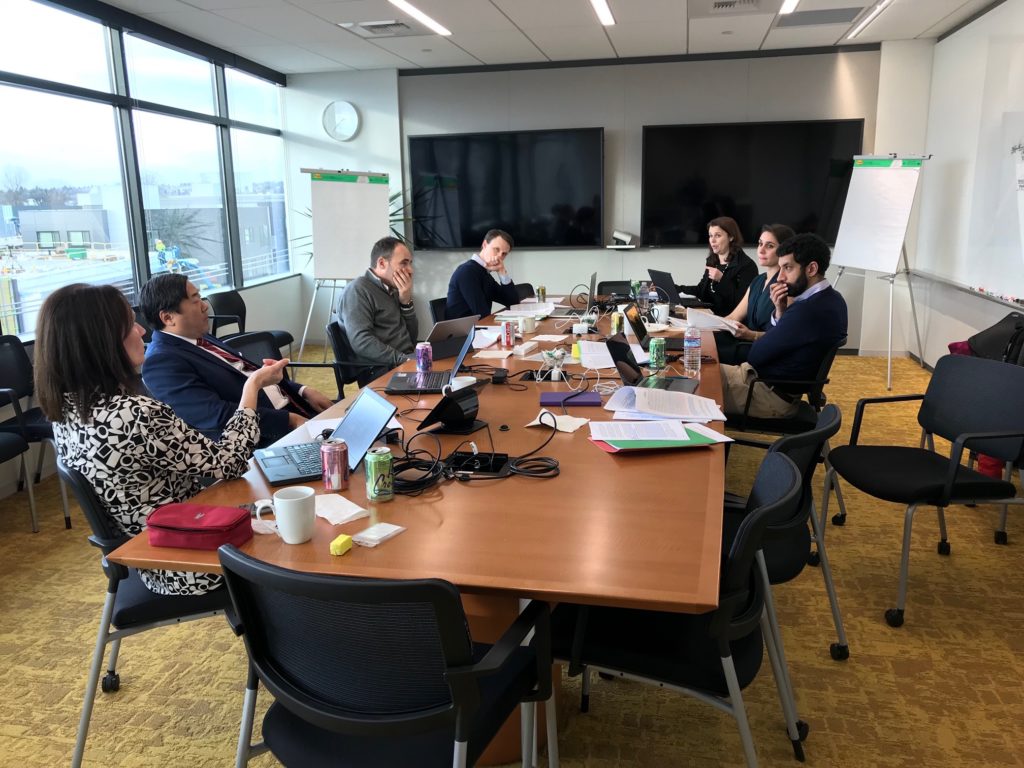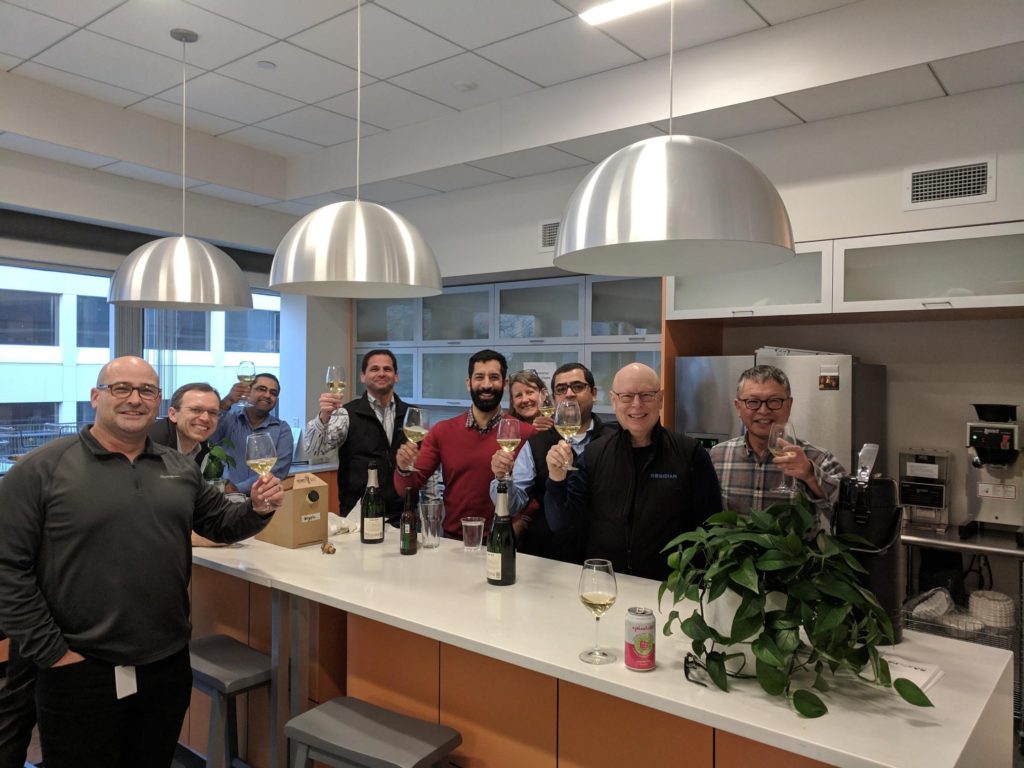This blog was written by Tariq Kassum, COO of Obsidian Therapeutics, as part of the From The Trenches feature of LifeSciVC.
Every morning before I go to work, I review my calendar for the day. This gets me into the right frame of mind and helps me set my priorities. On Thursday, January 3, 2019, I reviewed my schedule and saw that I had a clear calendar: dermatologist appointment, management team meeting, and nothing else.
My schedule was light because I had cleared my calendar a few days before. I knew what was coming and I needed free time to work. We were in the last steps of completing a major research collaboration with Celgene covering two of Obsidian’s lead programs for use in CAR-T therapies. We were finalizing the agreements and were aiming to announce the deal at JPMorgan in a few days.
On that Thursday, I was awaiting a draft of the documents back from Celgene for a planned quick turnaround by our team. We were already gathering signatures from our own investors and Board members in advance of the announcement. There were still a few open items, and experience had taught me that it was most certainly going to be tight. But I reassured myself: this is going to happen. We can totally get this done by Monday.
After checking my calendar and being satisfied by the large chunks of open time, I was clearing out my inbox when I saw an email come in from my colleague Vipin Suri. The email was innocently titled “News.” I read the deal announcement he had forwarded to me. Bristol Myers to Acquire Celgene.
I put down my coffee. Wait, what?
Racing to a Deadline
The past month had been a blur of documents and negotiations. As we had entered the final stages of discussions, Celgene told us that they wanted to announce this collaboration at JPMorgan to reiterate their commitment to cell therapy at the one year post-Juno mark. This seemed like a great idea to us, so we were racing to hit that deadline. The teams were well aligned on the partnership’s key goal: getting our technology into Celgene’s cell therapy portfolio to enable new treatments for patients with solid tumors. The Celgene deal team had also been highly motivated to finish the transaction and also very collaborative, with a definite let’s-get-it-done spirit. We had all worked through the year-end holidays, with two marathon days of face-to-face negotiations between Christmas and New Year. This was documented in a memorable photo of me and Rob Hershberg, their EVP and Head of Business Development, staring each other down across the negotiating table in Seattle.
Little did I know that Rob also had another transaction on his mind.
I read the news again and took another sip of coffee. Surprisingly, a sense of calm fell over me. Okay, that just happened, and I guess we have to deal with it. I took a closer look at the press release – it talked about a commitment to cell therapy, and there were even large CVR dollars tied to the success of certain Juno and Bluebird programs, so it didn’t seem like a complete strategic shift. That was positive. I texted my CEO, Mike Gilman, who is always reachable to me by iMessage, Twitter, carrier pigeon, you name it. But I couldn’t get hold of him.
An email from Celgene came in almost right away asking to talk. I told Celgene that we’d be in touch as soon as I could track down Mike. I tried him again; no answer.
Out of near-term options, I did the only logical thing: I stuck with the original plan and went to the dermatologist.
Three questions
As I crossed Staniford Street to the medical office building, I glanced at my phone and saw an email from one of our lawyers asking “Does this BMS deal affect us at all?” The heck if I know, I thought. My emailed response, though, was a little more measured. I wrote, I have no idea, but here’s how we should think about it:
- We need to figure out if they still want to do this deal
- We need to decide if we still want to do this deal
- If the answer to both is yes, would we change anything?
The next call I got was not from my CEO, but rather my chairman, whose call came in just as I walked into the examination room. He asked me what this news meant for us. I knew nothing, and neither did he, so it was a short call.
After having been declared free of skin cancer, I hopped in a Lyft to take me over the bridge to my office. I sat in the back and took yet another deep breath. Okay, let’s pick up the pieces here. Find Mike, get on the phone with Celgene, figure this out. Finally, as I passed the Whitehead Institute, Mike called. He sheepishly admitted that he had been at the gym and was not looking at his phone. We agreed to meet back at the office and to set up a “war room.”
Question One – In The War Room
We arrived at the war room and within an hour got Celgene on the phone. We learned that their internal confidentiality firewalls were strong – so strong, in fact, that except for Rob, the deal team we were working with was unaware of the BMS transaction. We also confirmed our hunch that the negotiations with BMS were taking place in parallel with ours over the Christmas break.
But the big news was that Celgene still wanted to complete their transaction with us.
Cell therapy was a key pillar for the combined company so it was important for them to keep building in that area. A successful collaboration would lead to new therapeutic options for patients, which remained their top priority. The urgency to announce at JPMorgan, though, was diminished, so they suggested we take a few days to consider what we wanted to do.
This conversation was very helpful, as my visions of a stuck transaction were extinguished. My heart rate started to go down a bit. So now we were on to step two:
Did we still want to do this deal?
Thought experiments, nips and tucks
In the war room that morning we got feedback from as many people as we could and also engaged in a series of thought experiments. Would we have done this deal if Bristol was on the other side? Under what conditions would we walk away? What happens if the combined company moves away from cell therapy? What if they lose interest in us? What if they actually want more from us?
Ultimately, we decided that the deal still made great sense. The economics were very favorable and the transaction was structured as a typical Celgene “hands-off” collaboration, with lots of independence for Obsidian. That, more than anything, gave us comfort that under most scenarios we would be fine. The strategic rationale for the transaction – gaining financial and intellectual capital, aligning with a leader in the space, and opening an accelerated path to the clinic – were all intact. We polled our Board members to see what they thought and they were in full alignment.
So now we were on to question three – assuming we want to do the deal, what, if anything, would we change? We asked our attorneys to compile a list of items and they sent it to us within a few hours. I was pleased to see that the items on the list weren’t really major surgery – more like nips and tucks around things like termination, reps and warranties, the candidate nomination process, etc. So now we had a playbook for the next phase of negotiations.
Next, we reconnected with the Celgene deal team and they were, understandably, quite distracted. They needed some time to process the news themselves, plus their time was disrupted by a parade of all-hands meetings, webcasts, etc. We agreed to wait a few days and then pick up where we left off.
What Happens When You Tempt the Deal Gods
After a couple of days we restarted negotiations, but they didn’t move as quickly as before. Without the forcing function of our prior JPMorgan deadline, it became tougher for each side to make micro-compromises. At the same time, though, we didn’t want to hesitate further. We had already been surprised once, and we had no desire to get surprised again.
The negotiations stretched into JPMorgan and the week after, which I had stupidly booked as a vacation in Napa, assuming our deal would be done. The deal gods, of course, laughed at me.
JPMorgan is always a blur, but it was far worse this year. We were trying to squeeze in meetings with potential partners and investors between document reviews and calls with lawyers. I was highly distracted, as my mind was constantly racing with thoughts of the transaction and the little micro-chess games that occur with each open item. We have to move quickly, I thought. Get it done before something else happens.
Despite our best efforts, when the conference ended we still had a few open issues. So I embarked on vacation while finalizing the transaction in between wine tastings and dining experiences. It was a tough balancing act, but I suspect the wine tasted better since it was a relief from all that was going on around me. Finally, on the last day of vacation (of course), we reached agreement on all the outstanding issues.
We signed and announced right after I got back.
Take a Breath
Having your counterparty get acquired at the 11th hour is a rare occurrence. However, the core tenets of working in BD applied here, as they always do. You need to stay calm, even when things look like they are collapsing. You need to be flexible, adaptable, and willing to do whatever it takes to ensure the transaction gets done. And you always need to have a clear sense of the strategic rationale for your transaction, so that you can keep focused on the right outcome through the twists and turns.
The collaboration has gotten off to a great start, and both teams are excited about working together to create novel cell therapies. Yes, we had a few heart attacks along the way, but if patients end up benefiting, there’s no doubt that it will have been worth it.







